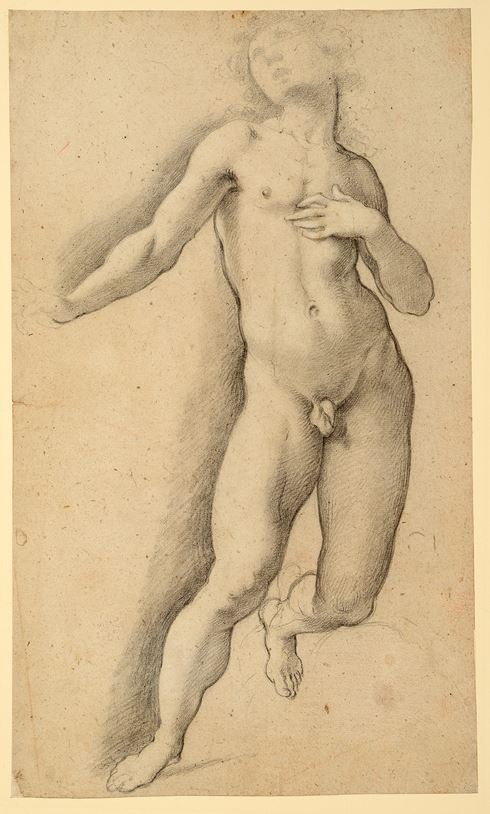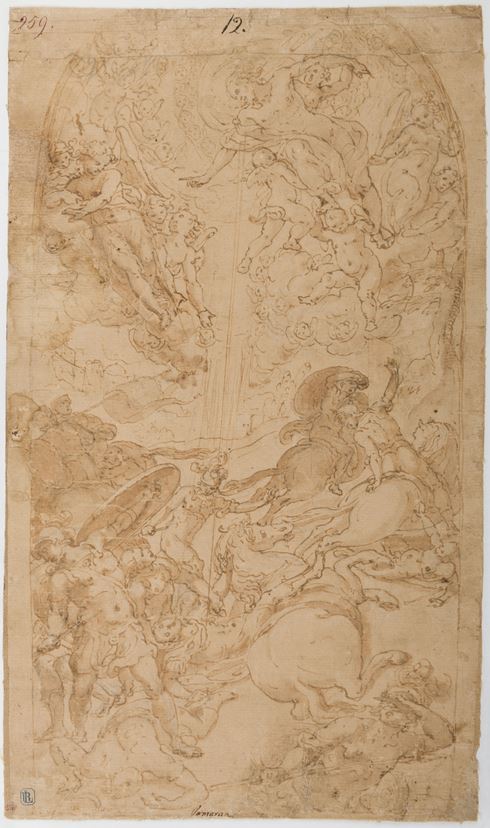 Cristoforo-RONCALLI-TheVirginandChildwithSaintAnne-1862014T184748.jpg?width=500&height=1000&qlt=80&format=jpg&mode=max)
Cristoforo RONCALLI
Pomarance 1552 - Rome 1626
Biography
Little is known of Cristoforo Roncalli’s artistic training. Known as Il Pomarancio after his birthplace of Pomarance, he is first documented working in Siena between 1576 and 1579. During this period he painted an altarpiece for the Duomo and collaborated on the decoration of a family palazzo, and also received a commission for an altarpiece intended for the church of SS. Apostoli in Florence. Roncalli then settled in Rome, where he is recorded by 1582, and was active there for the remainder of his career. He was associated with a circle of artists active in the city that included his compatriot Niccolò Circignani (confusingly also known as Il Pomarancio) as well as Cavaliere d’Arpino, Cesare Nebbia and Paris Nogari. Roncalli received numerous public and private commissions, and was admitted to the Accademia di San Luca in 1588.
He earned a reputation as an ecclesiastic mural painter of the first rank, gaining the patronage of such Roman families as the Crescenzi, Mattei and Giustiniani, and working in the churches of Santa Maria in Aracoeli, San Giovanni Decollato, Santa Maria in Vallicella and San Silvestro in Capite in Rome. Between 1599 and 1604 he supervised the decoration of the Cappella Clementina in St. Peter’s for Pope Clement VIII, and also worked for the Pope on the decoration of the transept of San Giovanni in Laterano. Around 1607 Roncalli was named a cavaliere di christo by Pope Paul V, shortly after receiving the most significant commission of his career; the fresco decoration of the sacristy and cupola of the Basilica of the Santa Casa at Loreto, on which he worked between 1605 and 1615. On his return to Rome, Roncalli spent the last decade of his career working on more modest commissions.
An exceptional draughtsman, Roncalli worked for the most part in both black and red chalk, switching easily between them for both compositional and figural studies, although using the former slightly more in the 1580’s and 1590’s. (While a number of pen drawings by the artist are known, after the 1580’s he seems to have worked almost exclusively in chalk.) His earliest datable drawings – studies for works of the late 1570’s, as well as copies after Raphael - already show a mastery of form and line and a sophistication that would be characteristic of the artist’s drawings throughout his career. The largest extant group of drawings by Roncalli is today in the Uffizi.

 Cristoforo-RONCALLI-TheVirginandChildwithSaintAnne-1862014T184748.jpg?width=1900&height=1500&mode=max)
 Cristoforo-RONCALLI-TheVirginandChildwithSaintAnne-1862014T184748.jpg?width=490&height=1000&qlt=80&mode=max)


